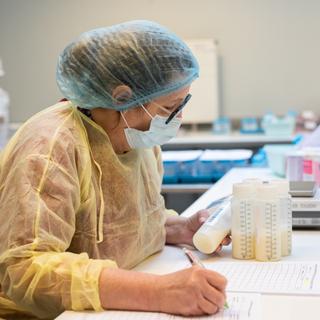


Inside the breast milk factory saving premature babies at Paris children's hospital
FeatureTwelve thousand liters of milk from donors are collected and processed each year in the basement of Necker Hospital. How is this precious liquid obtained, treated and distributed? Le Monde visited the regional milk bank of the Paris region with its head, neonatologist, Virginie Rigourd.

It is a unit without patients but vital for newborns cared for in the neonatal and neonatal intensive care wards of the Necker Hospital for children in Paris. In a basement of the Laennec building, 12,000 liters of breast milk are processed every year for the milk bank. Spread out around corridors with faded pastel walls, about 10 rooms house the stages of processing for this breast milk intended for the moderately, very and extremely premature babies of the Paris region.
Arriving frozen, the milk from donors is quarantined while a blood test is conducted on the women. It is then poured by staff wearing masks, gloves and pale yellow gowns into transparent plastic bottles. The milk is weighed and pasteurized in small bottles using a method (heating to 60.5 °C then ultra-high freezing) that preserves its anti-infectious properties while destroying as many germs as possible (including Bacillus and cytomegalovirus, the most dangerous for premature babies). This is followed by a second stay of 48 hours in large freezers, pending the results of the bacteriological analysis. 10% of the milk is discarded after these initial stages.
You have 84.12% of this article left to read. The rest is for subscribers only.
